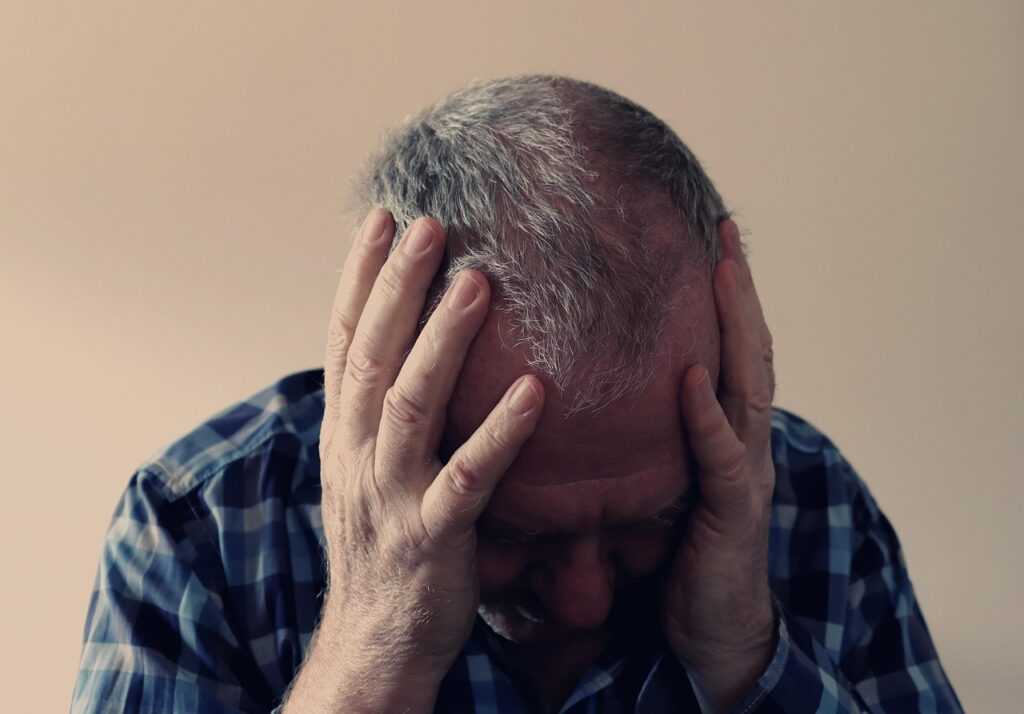Rapid cycling bipolar disorder throws extraordinary hurdles in the path of those affected. When someone experiences four or more mood episodes within a year, the constant emotional whiplash can demolish their sense of normalcy. Finding treatments that actually work becomes the central focus for anyone hoping to regain stability.
This article discusses realistic approaches to rapid cycling bipolar disorder treatment based on current understanding of what helps people manage this challenging condition.
The Unique Nature of Rapid Cycling
Standard bipolar disorder typically involves mood episodes that might occur once or twice yearly. Rapid cycling follows a much more intense pattern, with emotions swinging between extremes more frequently, creating a different treatment challenge altogether.
How It Manifests
The rollercoaster of rapid cycling bipolar disorder drives people through complete mood cycles multiple times annually. Someone might plunge from deep depression into heightened mania within weeks rather than months. The predictability that most people take for granted disappears as moods shift unexpectedly.
These accelerated cycles leave almost no breathing room between episodes. Just as someone begins recovering from depression, mania might surge, or vice versa. This constant state of flux makes holding down jobs, maintaining relationships, or following through with plans incredibly difficult.
Though it can affect anyone with bipolar disorder, some evidence suggests women experience rapid cycling more frequently. Without appropriate intervention, this pattern typically worsens over time rather than improving on its own.
Factors That Spark Episodes
No single factor causes rapid cycling patterns. For many people, thyroid abnormalities play a role. Others find their symptoms worsen with certain medications. Sleep disruption acts as a powerful trigger for nearly everyone with this condition.
Alcohol and recreational drugs frequently exacerbate cycling patterns. Some people notice their symptoms follow seasonal patterns, worsening at particular times of year. Major stress, whether positive or negative, often precipitates mood shifts.
Understanding personal triggers takes time and careful observation. A treatment approach that works wonderfully for one person might fail completely for another, making individualized care essential.
Treatment Approaches That Actually Work
Managing rapid cycling bipolar disorder requires attacking it from multiple angles simultaneously. Most people need some combination of medication, talk therapy, lifestyle adjustments, and support networks to achieve stability.
Finding the Right Medications
Medication provides the foundation of rapid cycling bipolar disorder treatment, though finding effective options often proves more challenging than with standard bipolar patterns. Beyond Standard Mood Stabilizers While lithium remains the gold standard for classic bipolar disorder, rapid cycling often responds better to alternatives.
According to one prominent psychiatrist in New York who specializes in mood disorders, anticonvulsant medications like valproate, lamotrigine, or carbamazepine frequently show better results with rapid cycling patterns.
Beyond Standard Mood Stabilizers
While lithium remains the gold standard for classic bipolar disorder, rapid cycling often responds better to alternatives. Anticonvulsant medications like valproate, lamotrigine, or carbamazepine frequently show better results with rapid cycling patterns.
These medications work through different mechanisms in the brain. Someone whose cycles tilt heavily toward depression might benefit more from lamotrigine, which shows stronger antidepressant properties. Those battling primarily manic symptoms might find valproate more helpful. The right rapid cycling bipolar disorder medication varies considerably between individuals.
Antipsychotic Medications
When mood stabilizers alone don’t provide sufficient relief, doctors often add atypical antipsychotics to treatment regimens. These medications can quickly control acute manic symptoms while potentially preventing future episodes when taken consistently.
Unlike older antipsychotics, newer options generally cause fewer side effects while offering broad mood-stabilizing properties that help with both manic and depressive phases.
The Antidepressant Dilemma
Rapid cycling bipolar disorder treatment guidelines typically recommend caution with traditional antidepressants. While these medications help unipolar depression, they sometimes trigger manic episodes or accelerate cycling patterns in bipolar patients.
Most specialists prefer addressing bipolar depression through mood stabilizers first, considering antidepressants only when absolutely necessary and always in combination with medications that prevent switching to mania.
Therapeutic Support
Medication addresses biological aspects of rapid cycling, but therapy provides essential psychological tools for managing the condition. Several approaches have proven particularly helpful.
Recognizing Thought Patterns
Therapy focused on identifying and changing problematic thought patterns helps people recognize early warning signs before full episodes develop. A therapist might help someone notice when their thinking becomes more grandiose or pessimistic, signaling potential mood shifts.
This approach teaches practical techniques for questioning unhelpful thoughts and implementing specific coping strategies tailored to individual needs. Regular sessions provide accountability while building skills that support long-term stability.
Stabilizing Daily Life
Some therapeutic approaches emphasize creating structure and routine. This method recognizes that disruptions to biological rhythms often trigger or worsen rapid cycling symptoms.
The goal involves establishing consistent patterns for sleep, meals, exercise, work, and social activities. A therapist helps develop realistic schedules while addressing relationship issues that might contribute to stress and destabilization.
Involving Support Networks
Treatment works better when family members understand rapid cycling bipolar disorder. Therapeutic approaches that include close supports help everyone learn about the condition while improving communication patterns at home.
Family members learn to recognize subtle signs of mood shifts, respond helpfully during episodes, and reduce household stress that might worsen symptoms. This approach builds a supportive environment that reinforces other treatment efforts.
Daily Management Techniques
Beyond formal treatment, everyday habits dramatically influence symptom severity in rapid cycling bipolar disorder.
Protecting Sleep
Few factors affect mood stability more than sleep. Inconsistent sleep patterns frequently trigger episodes, while regular sleep helps maintain emotional balance.
This means going to bed and waking at similar times every day, regardless of current mood state. During manic phases, people often feel they need little sleep, but maintaining regular rest prevents episode escalation. During depression, limiting excessive sleep helps prevent deepening symptoms.
Managing Daily Stressors
Stress remains one of the most reliable triggers for mood episodes. Effective stress management might include moderate physical activity that matches current energy levels, time outdoors, creative outlets, mindfulness practices, and setting reasonable boundaries with others.
Learning to recognize early stress signals allows for intervention before they escalate into full mood episodes. What feels like reasonable stress during stable periods might prove overwhelming during vulnerable phases.
Substance Choices
Alcohol and recreational drugs dramatically worsen rapid cycling for most people. These substances disrupt sleep, interfere with medication effectiveness, and directly impact brain chemistry already struggling with regulation.
Even seemingly minor substances affect mood stability. Coffee, energy drinks, and cigarettes can disturb sleep patterns and increase anxiety. Many people find reducing or eliminating these substances improves their treatment response.
Overcoming Treatment Obstacles
Several common challenges complicate rapid cycling bipolar disorder treatment. Recognizing these barriers helps develop workable solutions.
When Standard Treatments Fail
Some people with rapid cycling show limited response to typical medication approaches. This frustrating situation might require trying multiple medications or combinations before finding what works.
For treatment-resistant cases, doctors sometimes consider more intensive approaches. These might include combinations of medications not typically used together or, in severe cases, considering options like carefully monitored electroconvulsive therapy.
Maintaining Treatment Consistency
Following treatment plans becomes particularly challenging with rapid cycling. During manic phases, people often feel invincible and stop medications they believe they don’t need. During depression, hopelessness might make treatment seem pointless.
Creating systems that support medication adherence makes a tremendous difference. This might include using pill organizers, setting phone reminders, or having trusted people provide gentle accountability.
Complicated by Other Conditions
Many people with rapid cycling bipolar disorder also struggle with anxiety, substance problems, attention difficulties, or other mental health conditions that complicate treatment.
Addressing all existing conditions simultaneously, rather than focusing exclusively on mood symptoms, typically produces better outcomes. This comprehensive approach recognizes how different conditions interact and influence each other.
Recognizing When Changes Are Needed
Treatment for rapid cycling bipolar disorder frequently requires adjustments. Several signs suggest when modifications might help: continued mood episodes despite treatment, side effects that significantly impact quality of life, new symptoms developing, breakthrough episodes despite medication adherence, or major life changes affecting mood stability.
Regular communication with healthcare providers allows for timely adjustments before problems escalate. Small changes often prevent major episodes when implemented early enough.
Looking Forward
Rapid cycling bipolar disorder creates significant challenges, but appropriate treatment makes stability possible. Finding the right approach typically requires combining properly selected rapid cycling bipolar disorder medication with therapy, lifestyle adjustments, and support systems.
Current rapid cycling bipolar disorder treatment guidelines emphasize personalized care tailored to each person’s specific symptoms, triggers, and treatment responses. With proper management, people with this condition can experience longer periods of stability and improved quality of life.
For those currently struggling, working with healthcare providers who understand the unique challenges of rapid cycling provides the best chance for recovery. Though finding effective treatment takes time and persistence, the potential benefits—stable mood, improved relationships, and greater life satisfaction—make the effort worthwhile.

 Paulina Evansonic is a visionary journalist and media entrepreneur who founded Whisper Wagon Wire, a leading platform renowned for its exclusive insights into top stories, world news, science, technology, and home trends. With a passion for uncovering the truth and a keen eye for detail, Paulina has dedicated her career to providing readers with in-depth, accurate, and engaging content.
Paulina's journey in the media industry began with a strong academic background in journalism and communication. Her early career was marked by her work as a reporter and editor for various prestigious publications, where she honed her skills and developed a reputation for her investigative prowess and commitment to quality reporting.
Driven by a desire to create a more holistic and accessible news source, Paulina launched Whisper Wagon Wire. Under her leadership, the platform has grown to become a trusted name in journalism, known for its balanced reporting and insightful analysis. Paulina's innovative approach has not only elevated the standards of news media but also inspired a new generation of journalists to pursue excellence in their work.
Through Whisper Wagon Wire, Paulina continues to influence the media landscape, ensuring that readers stay informed about the most important developments around the world. Her dedication to truth and transparency remains at the core of her mission, making her a respected and influential figure in the field of journalism.
Paulina Evansonic is a visionary journalist and media entrepreneur who founded Whisper Wagon Wire, a leading platform renowned for its exclusive insights into top stories, world news, science, technology, and home trends. With a passion for uncovering the truth and a keen eye for detail, Paulina has dedicated her career to providing readers with in-depth, accurate, and engaging content.
Paulina's journey in the media industry began with a strong academic background in journalism and communication. Her early career was marked by her work as a reporter and editor for various prestigious publications, where she honed her skills and developed a reputation for her investigative prowess and commitment to quality reporting.
Driven by a desire to create a more holistic and accessible news source, Paulina launched Whisper Wagon Wire. Under her leadership, the platform has grown to become a trusted name in journalism, known for its balanced reporting and insightful analysis. Paulina's innovative approach has not only elevated the standards of news media but also inspired a new generation of journalists to pursue excellence in their work.
Through Whisper Wagon Wire, Paulina continues to influence the media landscape, ensuring that readers stay informed about the most important developments around the world. Her dedication to truth and transparency remains at the core of her mission, making her a respected and influential figure in the field of journalism.
